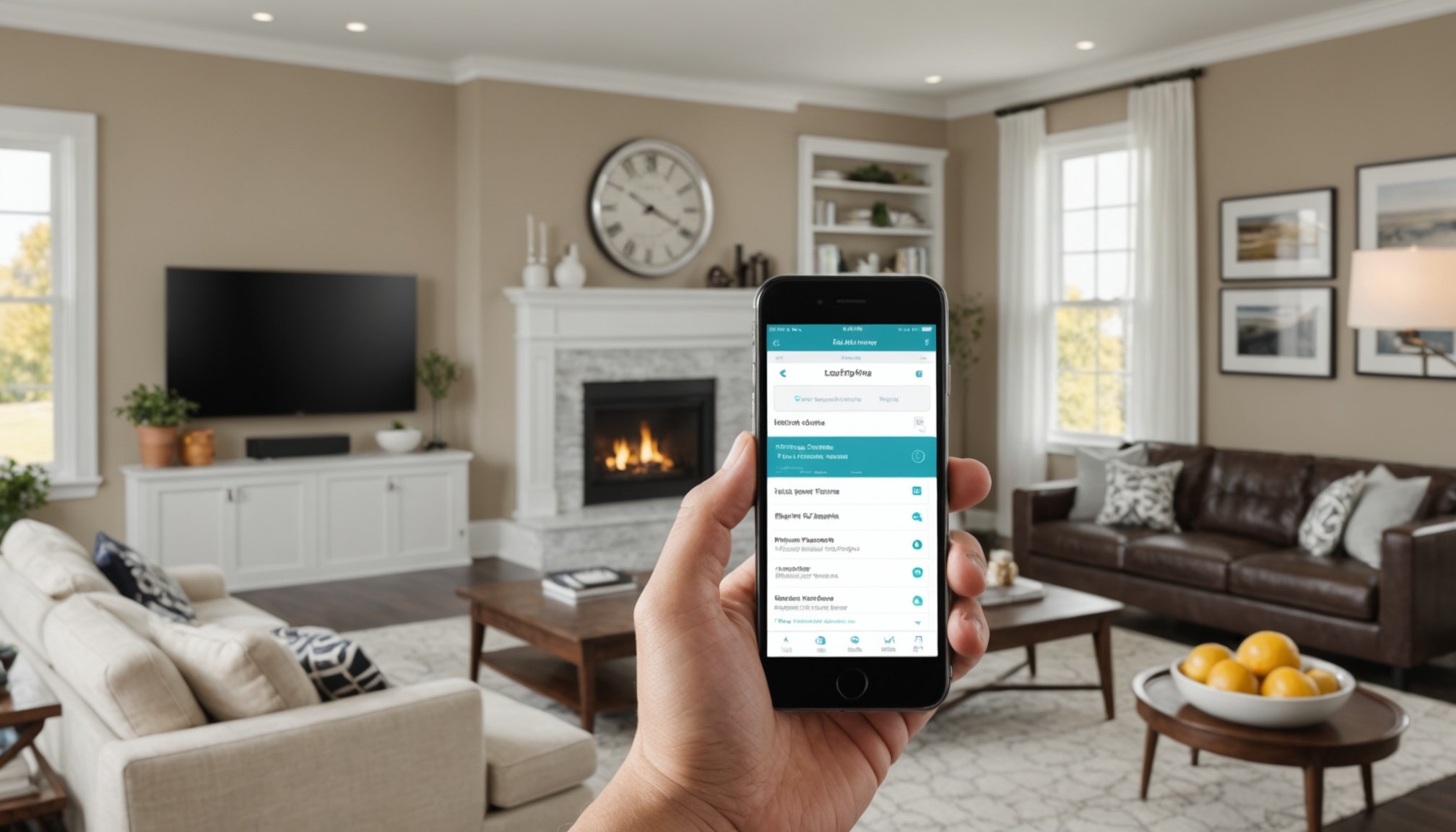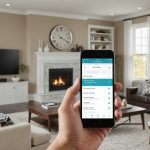Understanding Smart Home Management
Smart Home Management is transforming how households operate by integrating smartphone technology with home automation systems. These systems offer homeowners not only convenience but also increased control and efficiency. At the core of successful Smart Home Management is smartphone integration, which allows users to schedule and manage their devices from anywhere at any time efficiently. This integration enables users to turn lights on and off, control thermostats, and monitor security systems through intuitive apps.
The benefits of smart home systems are extensive. They provide enhanced security, energy savings, and an overall improvement in the homeowner’s lifestyle. Smart Home Management systems often include features like real-time alerts, energy usage tracking, and remote access, making them invaluable for busy individuals seeking seamless automation.
The key to effective Smart Home Management lies in the smartphone’s role in facilitating a user-friendly experience. It acts as a universal remote control, offering customizable settings and schedules for various smart devices. Users can create scenes or routines tailored to their needs, optimizing both comfort and efficiency.
In conclusion, Smart Home Management revolves around the seamless integration of technology, offering users unprecedented convenience and control. By embracing smartphone integration, homeowners can unlock the full potential of their smart home systems.
Seamless Scheduling Techniques
Integrating smart home scheduling can significantly streamline daily routines, enabling efficient time management. Effective automation tips transform how smart devices function by setting precise routines for energy conservation and convenience. One popular approach is the creation of custom scenes, which automatically trigger multiple devices based on specific conditions or times. For instance, a “morning routine” scene could simultaneously adjust lights, temperature, and music settings to create an optimal wake-up environment.
Using smartphones to engage with home automation elevates the scheduling process. Smartphone apps play a pivotal role by offering intuitive interfaces that simplify the setting of schedules and routines. These apps allow you to customise actions for devices like thermostats and smart blinds, which can be set to operate automatically during peak hours, enhancing energy efficiency.
Consider time management strategies that maximize utility without manual intervention. For example, programming your heating system to reduce energy use during working hours can lead to significant savings on energy bills. By harnessing smart scheduling, homeowners can focus on their daily activities without worrying about the finer details of home management. Moreover, experimenting with different routines provides insights into the best configurations for personal preferences, ultimately enhancing the smart home experience.
Troubleshooting and Support
Smart homes offer convenience, but users might occasionally face technical hiccups. Troubleshooting Tips are essential for resolving these common issues efficiently. If your smart device doesn’t respond, first verify the device’s connectivity to the home Wi-Fi network. A simple router reset can often solve connectivity problems, ensuring that all smart devices are properly linked.
When dealing with unresponsive lights or thermostats, check the smart home app for any pending software updates. Updates can enhance compatibility and fix bugs that may disrupt operations. Adjust app settings to see if manual connections have been disabled or interrupted by incorrect configurations.
For issues like voice-controlled devices not recognising commands, ensure microphone sensitivity is adequately set. Re-test devices with clear instructions and verify correct language settings to enhance comprehension.
Accessing support resources is also advisable when challenges persist. Many home automation brands offer online support forums or help articles, providing step-by-step guidance from fellow users and experts. Furthermore, reaching out to manufacturers via customer service lines offers direct assistance.
Finally, participating in online communities like smart home forums can offer diverse strategies and solutions from other users’ experiences, often leading to unique insights beyond available manuals or company FAQ sections.
Essential Apps for Smart Home Management
Smart home enthusiasts understand the value of Smart Home Apps in enhancing device management and usability. These apps serve as the cornerstone for seamless device compatibility, offering an intuitive interface tailored to streamline operations across multiple smart devices.
Top Smart Home Management Apps
When selecting an app suited for your smart home setup, consider options that integrate well with various brands and device models. App Recommendations often feature frontrunners like Google Home, Amazon Alexa, and Apple HomeKit. Each of these offers distinct advantages in terms of ease of use and device compatibility. Google Home, for instance, provides extensive integration with Google Nest products and third-party devices, delivering a cohesive experience.
Features to Look for in Smart Home Apps
Crucial features in Smart Home Apps include voice control, routine scheduling, and remote management capabilities. These elements empower users to engage more effectively with their smart environment. An ideal app will also support real-time notifications, ensuring that users remain informed about any operational changes or issues. By offering customization options and easy navigation, these apps significantly boost overall user experience.
Compatibility with Popular Smart Devices
Ensuring device compatibility is vital for a harmonious smart home ecosystem. Popular apps should support a broad array of smart devices including lights, cameras, and thermostats, maximizing functionality and operational fluidity. This compatibility guarantees a unified approach to smart home management, where diverse devices work collaboratively in sync.
Enhancing User Experience
Smart Home Customization plays a pivotal role in maximizing User Experience. By tailoring settings to fit personal preferences, homeowners can create a truly bespoke living environment. This involves adjusting features like lighting intensity, thermostat levels, and security settings to align with individual needs. Customization ensures your home responds exactly how you want, offering a unique and personal touch.
Gathering feedback is important for continual improvement. Engaging with other users or smart home communities allows homeowners to share insights and discover new ways to enhance their systems. Reviews and suggestions can lead to discovering innovative configurations or troubleshooting tips. An open dialogue about user experiences encourages collaboration and development across the smart home ecosystem.
User-friendly interfaces are crucial for Smart Home Apps. They simplify navigation and enhance accessibility, allowing users to interact with their devices effortlessly. Well-designed interfaces include intuitive menus, clear iconography, and easy access to settings, all of which contribute to a more satisfying user experience.
By prioritizing customization, feedback, and intuitive design, Smart Home Management can transform everyday living. This approach not only optimizes functionality but also ensures homeowners enjoy a tailored and efficient smart home experience.





